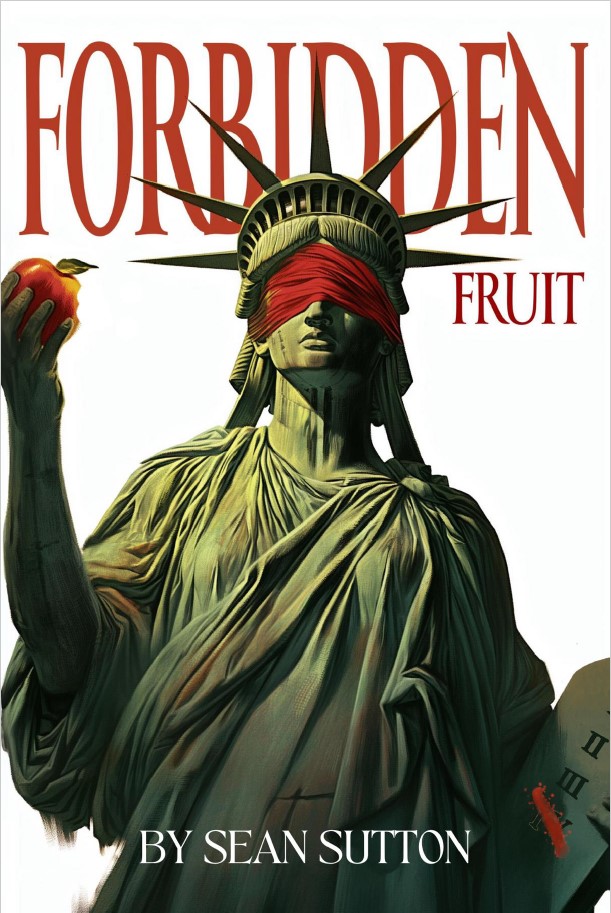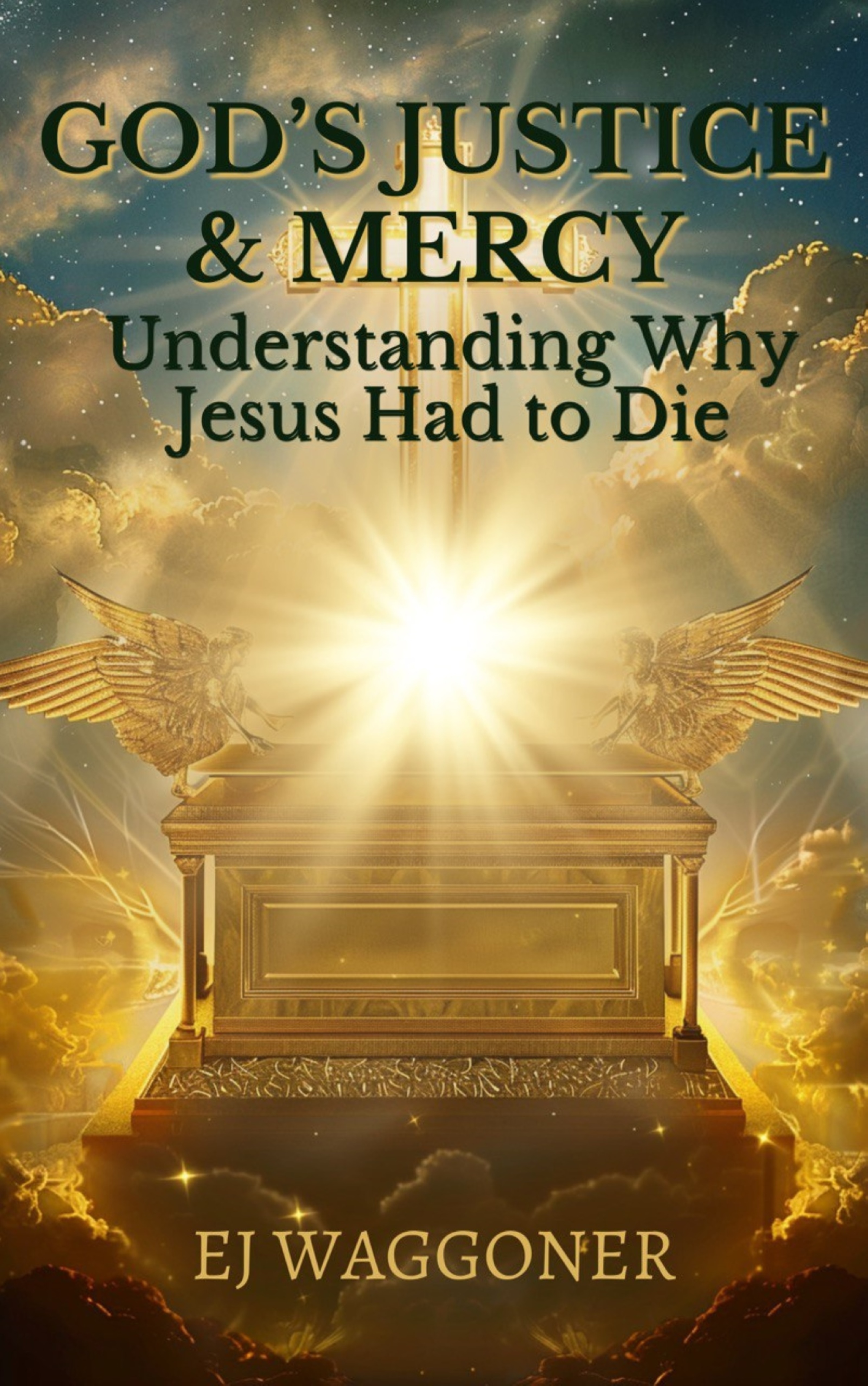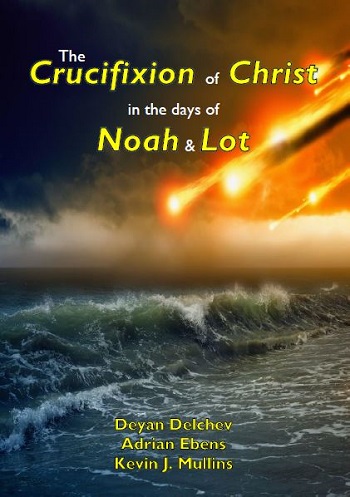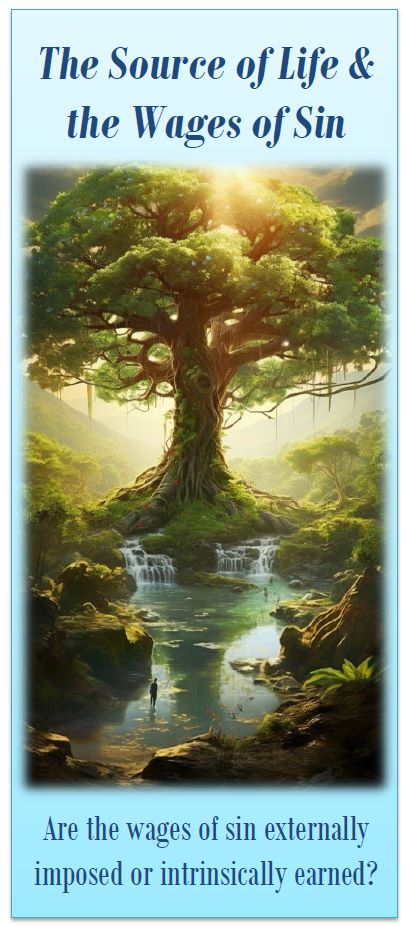(Daniel 8:1-14) What Does the Cleansing of the Sanctuary Mean?

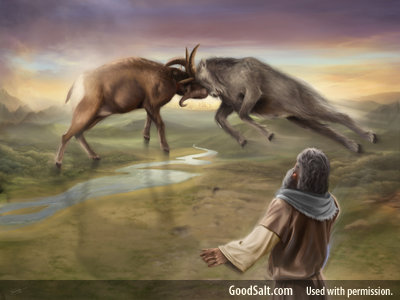 “In the third year of the reign of king Belshazzar a vision appeared unto me, even unto me Daniel, after that which appeared unto me at the first. And I saw in a vision; and it came to pass, when I saw, that I was at Shushan in the palace, which is in the province of Elam; and I saw in a vision, and I was by the river of Ulai. Then I lifted up mine eyes, and saw, and, behold, there stood before the river a ram which had two horns: and the two horns were high; but one was higher than the other, and the higher came up last. I saw the ram pushing westward, and northward, and southward; so that no beasts might stand before him, neither was there any that could deliver out of his hand; but he did according to his will, and became great. And as I was considering, behold, an he goat came from the west on the face of the whole earth, and touched not the ground: and the goat had a notable horn between his eyes. And he came to the ram that had two horns, which I had seen standing before the river, and ran unto him in the fury of his power. And I saw him come close unto the ram, and he was moved with choler against him, and smote the ram, and brake his two horns: and there was no power in the ram to stand before him, but he cast him down to the ground, and stamped upon him: and there was none that could deliver the ram out of his hand. Therefore the he goat waxed very great: and when he was strong, the great horn was broken; and for it came up four notable ones toward the four winds of heaven.” (Daniel 8:1-8)
“In the third year of the reign of king Belshazzar a vision appeared unto me, even unto me Daniel, after that which appeared unto me at the first. And I saw in a vision; and it came to pass, when I saw, that I was at Shushan in the palace, which is in the province of Elam; and I saw in a vision, and I was by the river of Ulai. Then I lifted up mine eyes, and saw, and, behold, there stood before the river a ram which had two horns: and the two horns were high; but one was higher than the other, and the higher came up last. I saw the ram pushing westward, and northward, and southward; so that no beasts might stand before him, neither was there any that could deliver out of his hand; but he did according to his will, and became great. And as I was considering, behold, an he goat came from the west on the face of the whole earth, and touched not the ground: and the goat had a notable horn between his eyes. And he came to the ram that had two horns, which I had seen standing before the river, and ran unto him in the fury of his power. And I saw him come close unto the ram, and he was moved with choler against him, and smote the ram, and brake his two horns: and there was no power in the ram to stand before him, but he cast him down to the ground, and stamped upon him: and there was none that could deliver the ram out of his hand. Therefore the he goat waxed very great: and when he was strong, the great horn was broken; and for it came up four notable ones toward the four winds of heaven.” (Daniel 8:1-8)
In the 8th chapter of the book of Daniel God gives Daniel a vision of a ram with two horns and a goat with one huge horn between its eyes. We’ve talked briefly about this in our study of Daniel chapter 2 and learned that the angel Gabriel revealed to Daniel what these two animals represent:
“The ram which thou sawest having two horns are the kings of Media and Persia. And the rough goat is the king of Grecia: and the great horn that is between his eyes is the first king. Now that being broken, whereas four stood up for it, four kingdoms shall stand up out of the nation, but not in his power.” (Daniel 8:20, 21)
Gabriel said the goat’s huge horn represents “the first king” (Verse 21). We saw from our study of Daniel chapter 7 that history shows this king was Alexander the Great. After the goat (Greece) defeats the ram (Medo-Persia), its horn breaks and four other horns take its place. We have seen that after Alexander’s death, his four leading generals took his place thus answering the prophecy.
“And out of one of them came forth a little horn, which waxed exceeding great, toward the south, and toward the east, and toward the pleasant land. And it waxed great, even to the host of heaven; and it cast down some of the host and of the stars to the ground, and stamped upon them. Yea, he magnified himself even to the prince of the host, and by him the daily [sacrifice] was taken away, and the place of his sanctuary was cast down. And an host was given him against the daily [sacrifice] by reason of transgression, and it cast down the truth to the ground; and it practised, and prospered.” (Daniel 8:9-12, KJV)
We went into great detail about the little horn power in our last two studies and found that this is referring to the Roman papacy. We saw that the above verses have been misinterpreted by most people and that the correct understanding is as follows:
“Yea, he (the little horn) magnified himself even to (opposed to) the Prince (Jesus) of the host, and by him the daily (the continual) was taken up (exalted, incorporated) ... and an host (people/army) was given him (joined with the little horn) in charge over the daily (the continual) in transgression.” (Daniel 8:11, 12)
We saw that “the Daily” mentioned here is not referring to the daily sacrifices, but to the daily, or continual, transgressions and desolations of PAGANISM throughout history that has plagued God’s people. The papacy exalted, or incorporated, paganism into its worship system. Gabriel explains:
“And in the latter time of their kingdom, when the transgressors are come to the full, a king of fierce countenance, and understanding dark sentences, shall stand up. And his power shall be mighty, but not by his own power: and he shall destroy wonderfully, and shall prosper, and practise, and shall destroy the mighty and the holy people. And through his policy also he shall cause craft to prosper in his hand; and he shall magnify himself in his heart, and by peace shall destroy many: he shall also stand up against the Prince of princes (Jesus’ crucifixion); but he shall be broken without hand.” (Daniel 8:23-25)
These characteristics of the little horn work in parallel to Daniel’s description in chapter 7, verse 25 that we looked at in our previous two studies. So far, all Daniel is seeing in this vision is a repeat of what he saw in chapter 7.
“Then I heard one saint speaking, and another saint said unto that certain saint which spake, How long shall be the vision concerning the Daily (pagan Rome), and the transgression of desolation (papal Rome), to give both the sanctuary and the host to be trodden under foot? And he said unto me, Unto two thousand and three hundred days; then shall the sanctuary be cleansed.” (Daniel 8:13, 14)
We now come to something a little different. Well, at first glance. Here, Daniel describes a sanctuary being cleansed after speaking about the little horn and its activities. Do we find a parallel to this in chapter 7? Yes, we do.
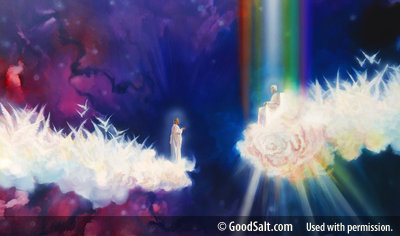 “I considered the horns, and, behold, there came up among them another little horn, before whom there were three of the first horns plucked up by the roots: and, behold, in this horn were eyes like the eyes of man, and a mouth speaking great things. I beheld till the thrones were cast down, and the Ancient of days (God, the Father) did sit, whose garment was white as snow, and the hair of his head like the pure wool: His throne was like the fiery flame, and His wheels as burning fire. A fiery stream issued and came forth from before Him: thousand thousands ministered unto Him, and ten thousand times ten thousand stood before Him: the judgment was set, and the books were opened … I saw in the night visions, and, behold, one like the Son of man (Jesus) came with the clouds of heaven, and came to the Ancient of days (God, the Father), and they brought Him (Jesus) near before Him (God, the Father). And there was given Him (Jesus) dominion, and glory, and a kingdom, that all people, nations, and languages, should serve Him (Jesus): His dominion is an everlasting dominion, which shall not pass away, and His kingdom that which shall not be destroyed.” (Daniel 7:7-10, 13, 14)
“I considered the horns, and, behold, there came up among them another little horn, before whom there were three of the first horns plucked up by the roots: and, behold, in this horn were eyes like the eyes of man, and a mouth speaking great things. I beheld till the thrones were cast down, and the Ancient of days (God, the Father) did sit, whose garment was white as snow, and the hair of his head like the pure wool: His throne was like the fiery flame, and His wheels as burning fire. A fiery stream issued and came forth from before Him: thousand thousands ministered unto Him, and ten thousand times ten thousand stood before Him: the judgment was set, and the books were opened … I saw in the night visions, and, behold, one like the Son of man (Jesus) came with the clouds of heaven, and came to the Ancient of days (God, the Father), and they brought Him (Jesus) near before Him (God, the Father). And there was given Him (Jesus) dominion, and glory, and a kingdom, that all people, nations, and languages, should serve Him (Jesus): His dominion is an everlasting dominion, which shall not pass away, and His kingdom that which shall not be destroyed.” (Daniel 7:7-10, 13, 14)
Right after Daniel sees the activities of the little horn, he sees this judgment scene with God, the Father sitting on a throne while Jesus comes on clouds into His presence. Notice this is NOT the second coming, but a time when Jesus and His Father come together at a time of judgment before His second coming. This judgment results in Jesus receiving the everlasting kingdom we talked about in our study on Daniel chapter 2 and the stone which caused the metallic image to crumble.
A little later Daniel mentions it again:
“I beheld, and the same horn made war with the saints, and prevailed against them; Until the Ancient of days (God, the Father) came, and judgment was given to the saints of the most High (God, the Father); and the time came that the saints possessed the kingdom.” (Daniel 7:21, 22)
And then the angel Gabriel begins to explain the vision to him:
“And the ten horns out of this kingdom are ten kings that shall arise: and another shall rise after them; and he shall be diverse from the first, and he shall subdue three kings. And he shall speak great words against the most High, and shall wear out the saints of the most High, and think to change times and laws: and they shall be given into his hand until a time and times and the dividing of time. But the judgment shall sit, and they shall take away his dominion, to consume and to destroy it unto the end. And the kingdom and dominion, and the greatness of the kingdom under the whole heaven, shall be given to the people of the saints of the most High (God, the Father), whose kingdom is an everlasting kingdom, and all dominions shall serve and obey Him.” (Daniel 7:24-27)
So, again, throughout Daniel chapter 7 we have seen things in this chronological order:
- Lion with eagle’s wings = Babylon
- Bear with three ribs in its mouth = Medo-Persia
- Leopard with four wings = Greece
- Ten horned beast = pagan Rome
- Little horn = papacy
- Judgment was set and the books opened
In Daniel chapter 8 we see it in this order:
- Ram with two horns = Medo-Persia
- Goat with one huge horn = Greece
- Little horn = both pagan and papal Rome
- Cleansing of the sanctuary
Since this judgment scene and cleansing of the sanctuary parallel each other, we can conclude that they are referring to the same thing. Both take place after the reign of the little horn. Notice again Gabriel’s words:
“And he shall speak great words against the most High, and shall wear out the saints of the most High, and think to change times and laws: and they shall be given into his hand until a time and times and the dividing of time. But the judgment shall sit …”
The event of the judgment/cleansing of the sanctuary must come after the reign of the little horn for “a time and times and the dividing of time.” In our previous study we saw that this time referred to the 1,260-year rule of the papacy during the Dark Ages from 538 A.D.-1798 A.D. Therefore, this judgment/cleansing of the sanctuary must have begun soon after 1798 A.D. and no sooner. (Please keep in mind that we have learned that a day in Bible prophecy equals one full year, thus the 2,300 days should be calculated using the same principle and would span a full 2,300 years. We’ll deal with the full time period in another study).
What the Cleansing of the Sanctuary is Not
Because the literal translation of Daniel 8:14 says “2,300 evenings and mornings” instead of the word “days”, there are many who teach that these “evenings and mornings” do not refer to “days” but to the daily “sacrifices.” Since there were two daily sacrifices (morning and evening) then the 2,300 day period should be divided in half making 1,150 daily sacrifices. They do this to keep the time-period in reach of Antiochus Epiphanes whom they claim is the focus of Daniel chapter 8. However, the phrase in verse 14 is “2,300 evenings and mornings.” This sequence is NEVER used for the daily sacrifices which is always in the sequence of “morning and evening.” Here’s a few examples:
“And thou shalt say unto them, This is the offering made by fire which ye shall offer unto the LORD; two lambs of the first year without spot day by day, for a continual burnt offering. The one lamb shalt thou offer in the morning, and the other lamb shalt thou offer at even.” (Numbers 28:3, 4)
“… and they offered burnt offerings thereon unto the LORD, even burnt offerings morning and evening.” (Ezra 3:3)
“Behold, I build an house to the name of the LORD my God, to dedicate it to Him, and to burn before Him sweet incense, and for the continual shewbread, and for the burnt offerings morning and evening, on the Sabbaths, and on the New Moons, and on the solemn Feasts of the LORD our God. This is an ordinance for ever to Israel.” (2 Chronicles 2:4)
“And they burn unto the LORD every morning and every evening burnt sacrifices and sweet incense …” (2 Chronicles 13:11)
The sequence, “evenings and mornings” is clearly speaking of “days” since it is the exact sequence of a “day” as defined in Genesis chapter 1. For example:
“And God said, Let there be light: and there was light. And God saw the light, that it was good: and God divided the light from the darkness. And God called the light Day, and the darkness he called Night. And the evening and the morning were the first day.” (Genesis 1:3-5)
“And God said, Let there be a firmament in the midst of the waters, and let it divide the waters from the waters. And God made the firmament, and divided the waters which were under the firmament from the waters which were above the firmament: and it was so. And God called the firmament Heaven. And the evening and the morning were the second day.” (Genesis 1:6-8, see also, verses 13, 19, 23, 31)
Although I do not agree with his final calculation regarding the year 1966 A.D., Adam Clarke makes this initial comment regarding the 2,300 days, believing they extend for 2,300 years:
“Unto two thousand and three hundred days - Though literally it be two thousand three hundred evenings and mornings. Yet I think the prophetic day should be understood here, as in other parts of this prophet, and must signify so many years.”
For a discussion on the reign of Antiochus Epiphanes and whether or not he’s the focus of Daniel chapter 8, see our study on Who is the Little Horn? (Part One).
The Cleansing of the Sanctuary
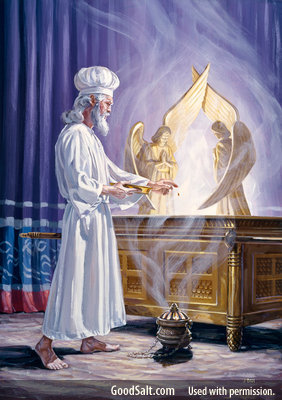 To Daniel, this cleansing of the sanctuary would have sounded familiar. This is what would take place on the holiest day of the year, Yom Kippur (Day of Atonement) when the high priest would enter into the second apartment of the sanctuary called the Holy of Holies (or, the Most Holy Place) and begin a cleansing process:
To Daniel, this cleansing of the sanctuary would have sounded familiar. This is what would take place on the holiest day of the year, Yom Kippur (Day of Atonement) when the high priest would enter into the second apartment of the sanctuary called the Holy of Holies (or, the Most Holy Place) and begin a cleansing process:
“Then he (Aaron/high priest) is to take a censer and fill it with coals from the fire on the altar (of incense) in the LORD’s presence. With his hands full of spiced and refined incense, he is to bring it beyond the curtain (into the Holy of Holies). Then he is to place the incense over the fire in the LORD’s presence, ensuring that the smoke from the incense covers the Mercy Seat (which is the lid of the Ark of the Covenant), according to regulation, so he won’t die. He is to take blood from the ox and sprinkle it with his forefinger toward the surface of the Mercy Seat. Then he is to sprinkle the blood on the surface of the Mercy Seat with his forefinger seven times … No person is to be there when he enters the Tent of Meeting to make atonement in the sacred place, until he comes out and has made atonement on account of himself, his household, and the entire assembly of Israel. When he goes to the altar in the LORD’s presence to make atonement for himself, he is to take some of the blood from the bull and the male goat, place it around the horns of the altar, and sprinkle it with the blood on his forefinger seven times, cleansing and sanctifying it from Israel’s sins … This is to be a perpetual statute for you: On the tenth day of the seventh month (Day of Atonement), you (including both the native born and the resident alien) are to humble yourselves by not doing any work, because on that day, atonement will be made for you to cleanse you from all your sins. You are to be clean in the LORD’s presence. It’s the Sabbath of all Sabbaths for you, so humble yourselves. This is to be a perpetual statute.” (Leviticus 16:11-17, 29-31)
It is interesting to learn that the Fall festivals begin with Yom Teruah (commonly known as the Feast of Trumpets). Yom Teruah is a ten-day festival which ends on Yom Kippur (Day of Atonement). These ten days are referred to as the “Days of Awe” because they are considered to be a time when God sits on His throne to commence the judgment. In fact, according to the Jews, Daniel 7:9, 10 is clearly speaking of Yom Teruah, when the judgment books are opened, which culminates on Yom Kippur, when the sanctuary would be cleansed, and the people are sealed. In the Jewish Encyclopedia it is written:
“God, seated on His throne to judge the world, at the same time Judge, Pleader, Expert, and Witness, openeth the books of records; it is read, every man’s signature being found therein. The great trumpet is sounded; a still, small voice is heard; the angels shudder, saying, This is the day of judgment: for His very ministers are not pure before God. As a Shepherd mustereth his flock, causing them to pass under his rod, so doth God cause every living soul to pass before Him to fix the limit of every creature’s life and to foreordain its destiny. On New-Years Day the decree is written; on the Day of Atonement it is sealed who shall live and who are to die.” - (Volume 2, p. 286)
Another name for Yom Teruah is Rosh Hashanah which means “head of the year.” In one of the Jewish commentaries called The Talmud we read, “All are judged on Rosh Hashanah, and the sentence is sealed on Yom Kippur.” (Rosh Hashanah 16a).
In describing one of the things the high priest was to do on Yom Kippur God says, “So he shall make atonement for the holy place, because of the uncleanness of the children of Israel and because of their transgressions, for all their sins ...” (Leviticus 16:16, KJV). The word “place” in the phrase “Holy Place” is not actually found in the manuscript that the King James translators are using. They supplied that word attempting to make the meaning clearer in English. Here is how it appears in Young’s Literal Translation:
“and he hath made atonement for the sanctuary because of the uncleanness of the sons of Israel, and because of their transgressions in all their sins; and so he doth for the tent of meeting which is tabernacling with them in the midst of their uncleannesses.”
And here it is as it appears in Brenton’s Septuagint Translation, which is an English translation of the Greek Old Testament:
“and he shall make atonement for the sanctuary on account of the uncleanness of the children of Israel, and for their trespasses in the matter of all their sins; and thus shall he do to the tabernacle of witness established among them in the midst of their uncleanness.”
The Hebrew word for “holy” in this verse is qodesh which actually can refer to the whole sanctuary and not just one apartment. Daniel used this same Hebrew word in Daniel 8:14 where he wrote, “For two thousand three hundred days; then the sanctuary (qodesh) shall be cleansed.” This is great evidence that the prophecy concerning the cleansing of the sanctuary is linked to Yom Kippur since the word qodesh is used throughout Leviticus 16 to describe the sanctuary and its cleansing!
Another connection we see between Daniel 8 and Yom Kippur is found in the types of animals that are used. In Daniel chapter 8 Daniel sees two kinds of animals - a ram and a goat. In Leviticus 16:5 we are told that the high priest was to take from the congregation “two kids of the goats ... and one ram ...”
Daniel Does Not Fully Understand
Although Daniel was familiar with the Day of Atonement and the cleansing the sanctuary process, at the end of Daniel chapter 8 we read that Daniel does not understand the part of the vision concerning the 2,300 days (years) and the cleansing of the sanctuary because the angel Gabriel doesn’t fully explain that part yet. In verse 26, however, Gabriel says: “And the vision of the evening and the morning which was told is true: wherefore shut thou up the vision; for it shall be for many days.” (Daniel 8:26). Remember, Gabriel is referring to the 2,300 days (evenings and mornings) here.
Gabriel doesn’t interpret this part of the vision. He only states that it’s true and tells Daniel to “shut ... up the vision” and says that it will come to pass “many days” in the future. Daniel is not to know what this part of the vision means at this time, quite possibly because Daniel was starting to feel ill:
“And I Daniel fainted, and was sick certain days; afterward I rose up, and did the king’s business; and I was astonished at the vision, but none understood it.” (Daniel 8:27)
As a result, Daniel did not understand this part of the vision. He understood the rest of the vision, but Gabriel does not interpret this part at this time. This closes chapter 8 of the book of Daniel.
Can we be absolutely sure that, when Daniel says that he didn’t understand the vision, he was only speaking of the cleansing of the sanctuary in “two thousand three hundred days”? Yes.
In Daniel 8:1, 2 Daniel says the word “vision” three times. In all three places he uses the Hebrew word חָזוֹן (chazon) which refers to the whole entire vision. In verse 26 Daniel uses the word “vision” twice. The first instance he uses the word מַרְאֶה (mareh) while in the second instance he goes back to the word hazon. The word mareh refers to only a piece or, part of the whole vision (hazon). In this case it refers to the “evenings and mornings.” Thus, the word mareh is connected to the 2,300-day prophecy spoken of in verse 14. In verse 27 Daniel says he could not understand the “vision” (mareh). Therefore, it was only part of the vision that Daniel could not understand, and the only part of the vision connected with the word mareh is the 2300-day prophecy in verse 14. This is important, it will come up again.
Before we move on to understanding the 2,300-day prophecy, I believe we should first study the sanctuary itself. That way we can be better equipped to not only understand what sanctuary is to be cleansed, but why it needs to be cleansed. With that in mind, let's move onto our next study: Why Does the Sanctuary Need to be Cleansed?

